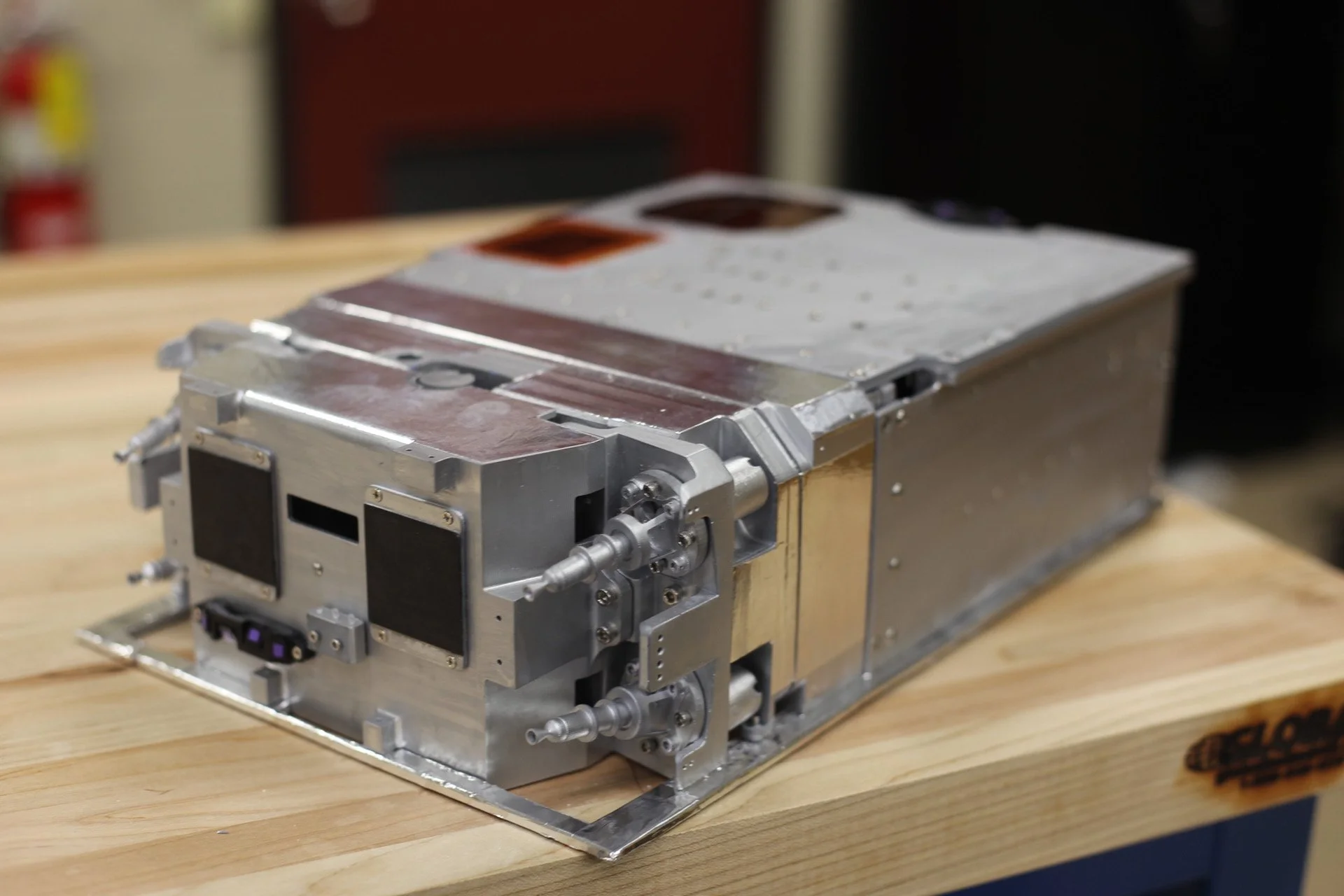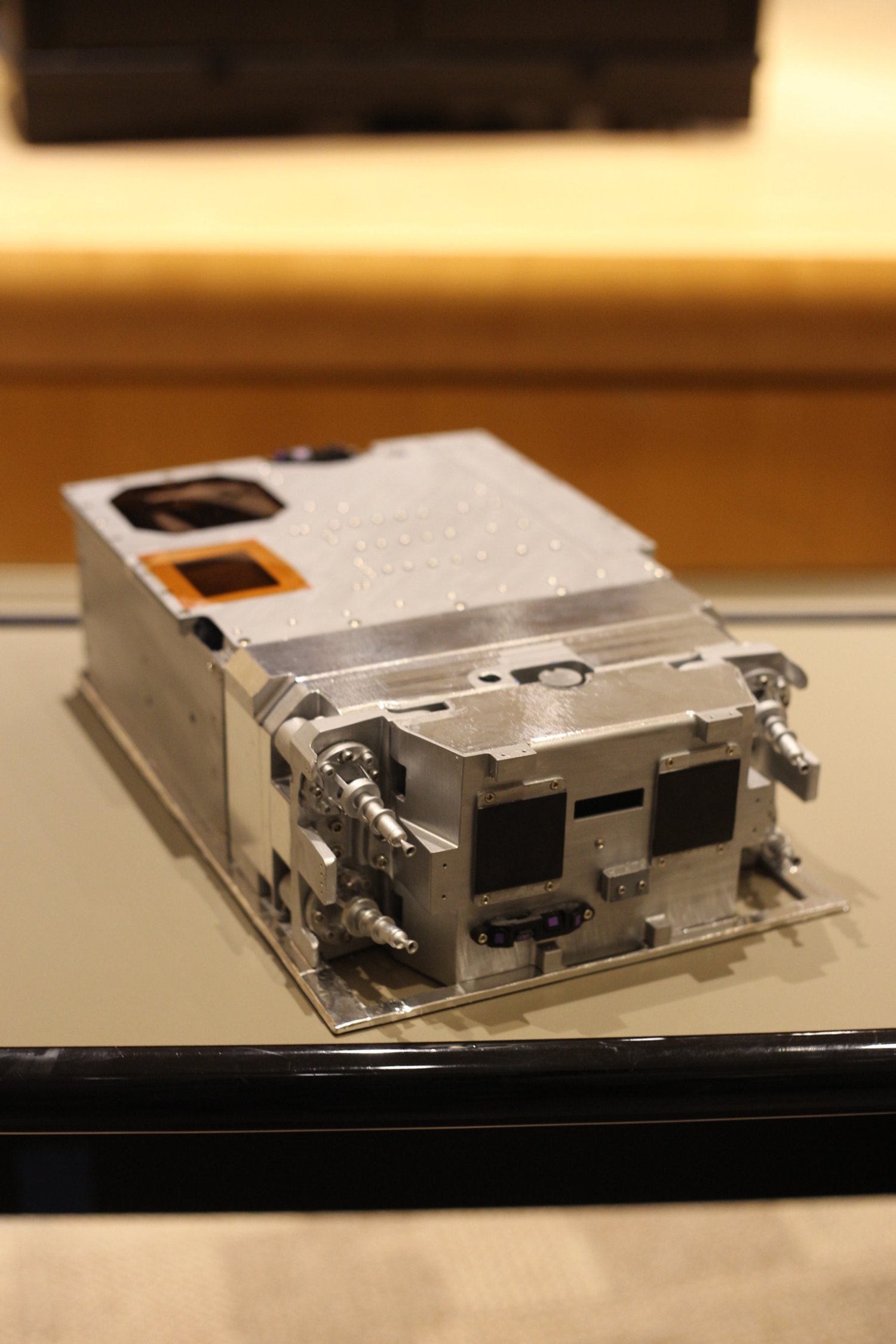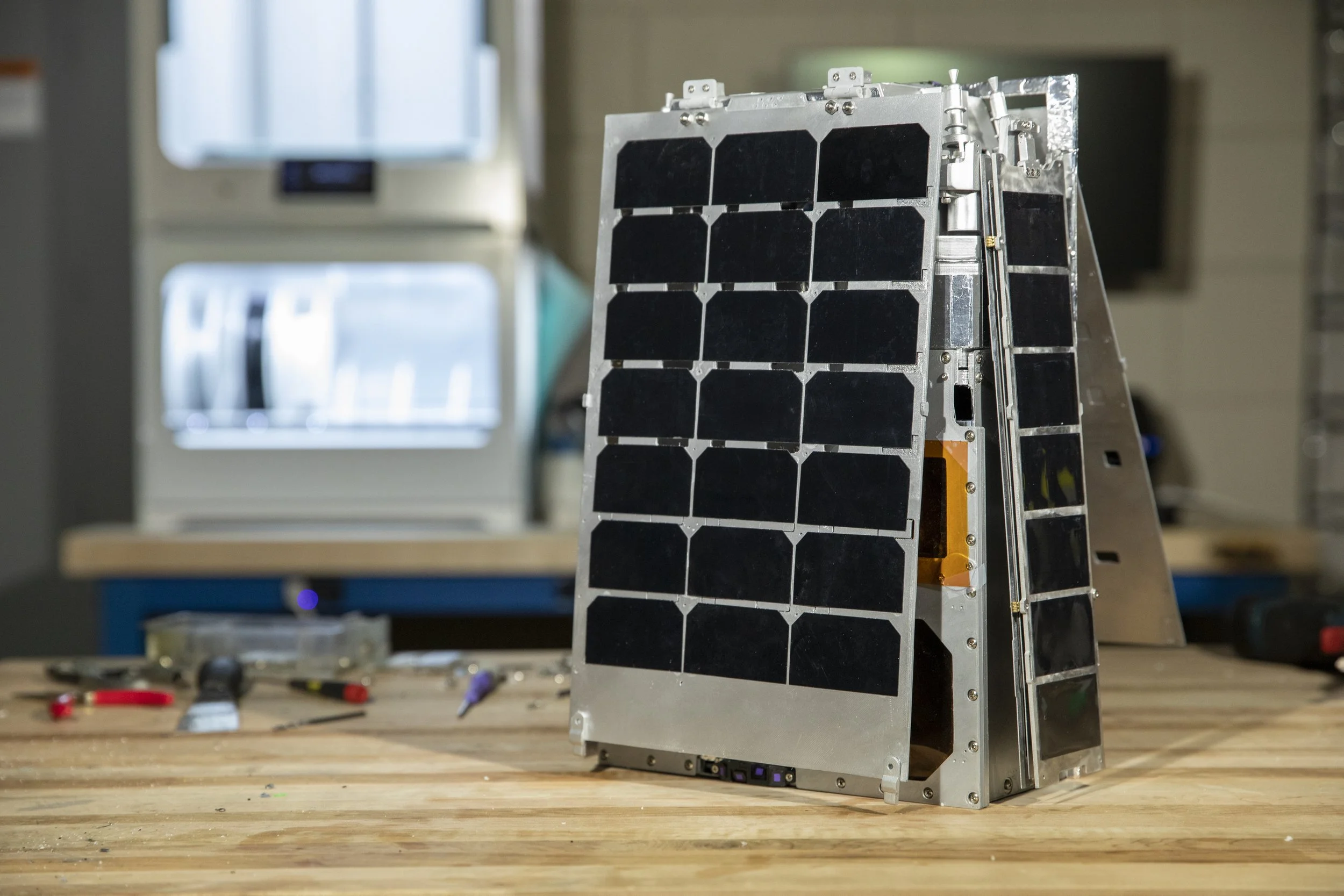GEORGIA TECH RESEARCH INSTITUTE
I worked as an opto-mechanical student assistant within the Electro-Optical Systems Lab at Georgia Tech Research Institute from 2022 to 2024. At GTRI I assisted in the research and development of electro-optical and radio-frequency (EO/RF) technology, primarily in capacities of opto-mechanical design, drafting, simulation and fabrication. Additionally, I often utilized my background in art and design to create displays, models, conceptual renderings, and animations.
Scheimpflug Lidar
I worked on the research and development of a Scheimpflug tilt-shift lidar used for range-resolved atmospheric sensing. Using an off-axis image plane, Scheimplflug cameras allows for long-range focus down the length of a target z-space. Specifically, this project showcases the potential for Scheimpflug technology across domains of lidar, remote sensing, atmospheric monitoring, and industrial diagnostics, while providing additional utility as a low-cost outlet for photogrammetry, 2D/3D mapping, and point cloud generation. I worked on the mechanical design, Solidworks CAD, machining, and assembly of this build, and developed the conceptual renderings and photography used for promotion and documentation.
This project was lead by optical engineer Nathan Meraz, as part of independent research and development (IRAD) at GTRI. It will be presented at the SPIE Defense + Commercial Sensing (SPIE DCS) conference in 2025. The pre-print can be viewed below.
Solar Power for Lunar Operations
I worked with engineers at GTRI to develop an animatic showcasing the potential of solar energy in powering future lunar endeavors. Current operations on the moon are prohibited by long cycles of lunar night; the introduction of solar energy within the moon’s orbit would provide necessary energy to sustain permanent operations, as well as life on the moon.
This animatic was developed as part of independent research and development (IRAD) for GTRI.
Video INFO
Aside from a selection of shots borrowed from NASA’s SLS launch (seen from 1:07-1:20), I modeled, animated, and composited all of the assets seen. 3D modeling was completed in Solidworks; with texture, lighting, and 3D animation done in Keyshot; final 2D compositing was completed using Adobe After Effects, with picture and sound editing completed in Adobe Premiere Pro.
SAtellite Design
Schematic of the satellite design. For realism, all necessary systems were included in the model. Additionally, the surface area of the arrays were designed at a scale which could feasibly sustain power transmission to the moon’s surface. For reference, the scale of this satellite matches roughly that of the International Space Station.
SPACE COWBOY Edit
I made an alternate cut of the video, which I personally prefer; however, for obvious reasons it was not ultimately used by GTRI. You can enjoy it here exclusively.
lunar flashlight
I built a scale model of NASA and GTRI’s Lunar Flashlight CubeSat to promote its launch in December of 2022.
Fabrication INFO
This model was created using the original Solidworks assembly from NASA and GTRI. Geometry validation and 3D print prep was performed in Rhinoceros 3D. The body of the cubesat was printed in PETG using an Ultimaker 5S, with select parts printed using a Formlabs 2 resin printer. The solar arrays were cut of aluminum using a water jet (provided by GT’s College of Aerospace Engineering.) To achieve the final look, the printed pieces were sanded, primed, painted, and given a final alcohol wash to achieve a faux metallic finish. All CAD, printing, fabrication and assembly performed by me.
An article was published by GTRI documenting the project. See below.


















